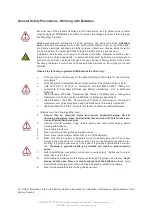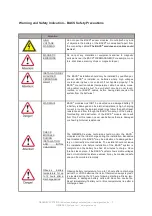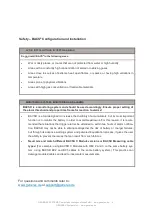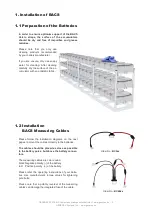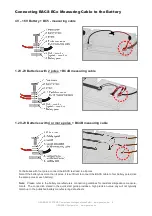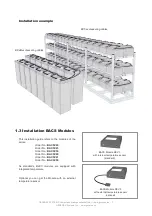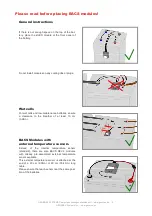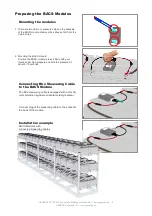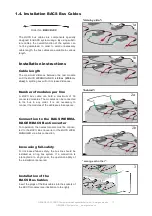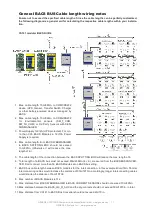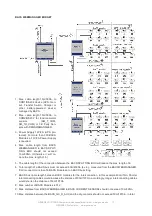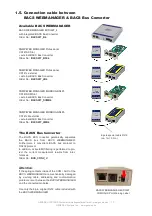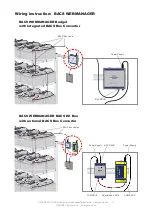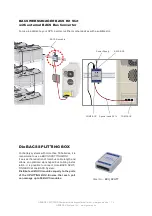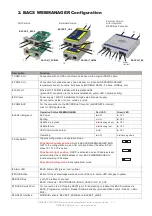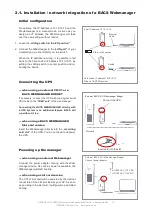
GENEREX SYSTEMS Computervertriebsgesellschaft mbH - www.generex.de - 3
GENEREX Systems Inc. - www.generex.us
Warning and Safety Indication – BACS Safety Precautions
Attention
HIGH
VOLTAGE
WARNING
Do not open the BACS
®
sensor modules. Do not attach any kind
of objects to the battery or the BACS
®
modules itself apart from
the connecting cables!
The BACS
®
modules and cables could
be live!
MAGNETIC
EMISSIONS
Do not put any materials or equipment sensitive to magnetic
emissions near the BACS
®
WEBMANAGER (For example, moni-
tors, disk drives, memory chips or magnetic tapes.)
INSTALLATION BY
QUALIFIED
PERSONNEL
ONLY!
!
The BACS
®
installation should only be installed by qualified per-
sonnel. BACS
®
is installed on batteries where high voltages
could cause injuries or even death if not handled properly!
The
BACS
®
connection cables (temperature cable, bus cable, meas-
uring cable) could be live! To avoid short circuits, do not touch,
replace, or cut BACS
®
cables, before having disconnected the
system from the batteries!
WARNING!
CHECK
MODULES
DURING
INSTALLATION
AND
INITIAL
CHARGING
Observe
battery
temperature for up
to 12 hours after a
discharge period
BACS
®
modules must NOT be mounted on a damaged battery! If
a battery is damaged and its internal resistance is high, charging
current (or current being discharged) may follow the path of least
resistance and flow through the BACS
®
module, not the battery.
Overheating and destruction of the BACS
®
module can result
from this
.
For this reason, never use batteries that are damaged
or show high internal resistances
The GENEREX service technician should monitor the BACS
®
modules and the initial charge during the installation. Excessive
heat created by the BACS
®
may be indication of a damaged bat-
tery or incorrectly mounted cables. The installer should not leave
the installation site before installation of the BACS
®
system is
complete and the battery has had 60 minutes to charge. Once
this has taken place, if the BACS
®
system shows stable voltages
and normal internal resistance values, it may be considered safe
and can be monitored remotely.
Observe battery temperature for up to 12 hours after a discharge
period! For VRLA batteries, the risk of thermal runaways is great-
ly elevated during the 12 hours following discharge. Rising tem-
peratures in damaged battery cells and blocs can cause fire.
React immediately if battery cell or bloc temperatures rise after a
discharge phase.


